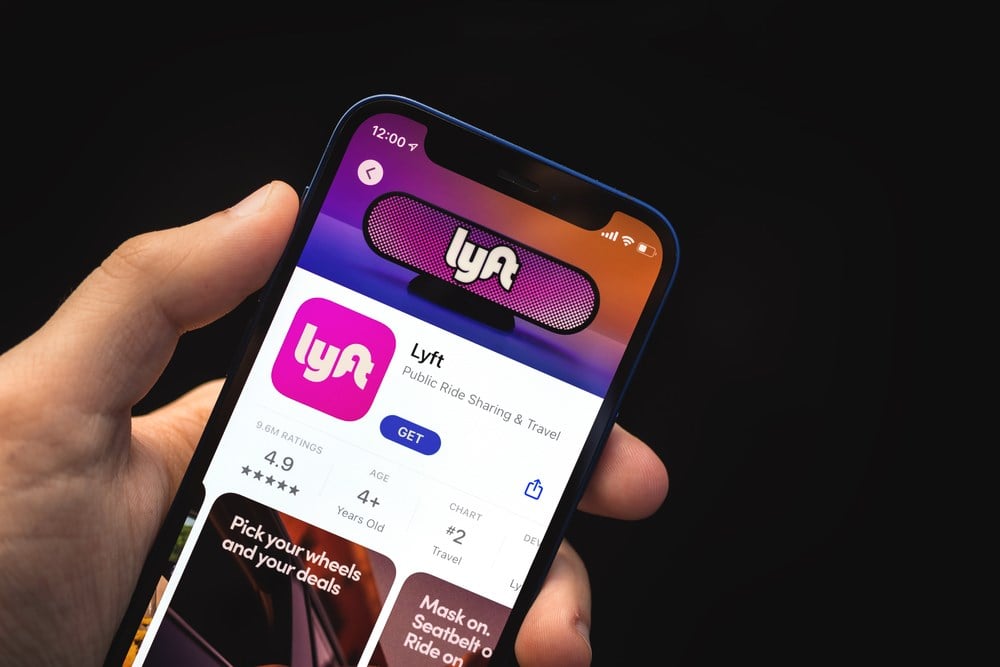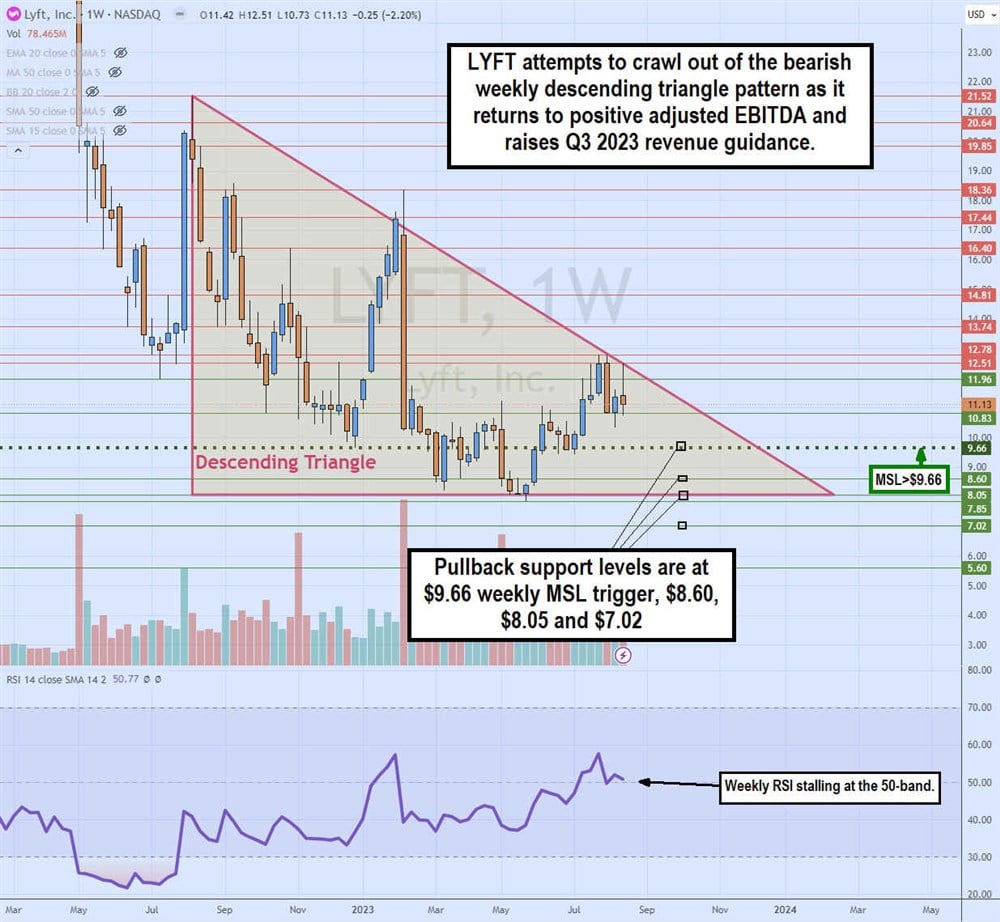
Rideshare operator Lyft Inc. (NASDAQ: LYFT) has all been left for dead after rival Uber Technologies Inc. (NYSE: UBER) reported a 49% revenue spike and double-digit metrics growth in 2023. Lyft neglected to diversify its business with food delivery or other businesses outside of modal transportation, instead opting to be a pure-play rideshare company.
Lyft shares had fallen to all-time lows of $7.85 in May 2023 after repeatedly disappointing investors again in Q4 2022, losing $400 million in the quarter. It capped it off with a trainwreck conference call that prompted a 30% haircut in its share price. This prompted CEO Logan Green to step down and appoint a new CEO in desperate hopes for a turnaround.
New Leadership
The new CEO David Risher has had tenures at e-commerce giant Amazon.com Inc. (NASDAQ: AMZN) and as a general manager at Microsoft Co. (NASDAQ: MSFT). His experience with cost-cutting and working with tight budgets stem from leading a non-profit for the past 13 years.
Upon taking the helm in April 2023, Risher implemented immediate cost-cutting measures laying off 26% of its workforce or 1,072 employees in that month on top of the 13% workforce reduction already announced in November 2022.
In a show of confidence, CEO Risher purchased 100,000 shares of LYFT for $1.15 million at an average price of $11.46 per an August 15, 2023 filing.
Plotting the Comeback
Lyft has implemented aggressive tactics to try to win back market share from Uber, including a price war. It's targeted back-to-school and back-to-work tailwinds to win back customers with lower fares, especially during surge periods undercutting Uber's rates. This has helped Lyft regain some market share from Uber as active rises, which declined by 2 million in Q1 2023 before his appointment and rose by 8.5% in Q2 2023.
However, this came at a cost as the revenue per active user (RevPAR) fell by 5% to $47.51, which caused its contribution margin to decline by 18 bps. CEO Risher's cost-cutting initiatives are succeeding, as expenses comprised just 40% of total revenues versus 54% in the year-ago period.
Innovations
The company implemented specific innovations to bolster its driver supply back to pre-pandemic levels. It improved its stay-in-the-area filter for drivers to keep rides within a preferred five-mile geographical area. Lyft is using cost savings to reinvest back into technological innovations. The company integrated digital ads into the Lyft mobile app to generate a new revenue stream.
Digging Out of the Grave
On Aug 8, 2023, Lyft released its fiscal second-quarter 2023 results for March 2023. The company reported adjusted earnings-per-share (EPS) profit of 16 cents, excluding non-recurring items, beating consensus analyst estimates for a loss of 1 cent by 17 cents. Net loss was $114.3 million compared to $187.6 million in the year-ago period. However, the net loss includes a $116.6 million stock-based compensation and related payroll tax expense.
Positive Adjusted EBITDA
Adjusted EBITDA was $41 million, beating its earlier guidance for a loss of $20 million to $30 million. Keep in mind that they beat their own lowered guidance. Revenues rose 3.1% YoY to $1.02 billion versus $1.02 billion consensus analyst estimates. Active riders rose 8.2% to 21.5 million. Rideshare rides grew 18% YoY.
Lyft is still behind Uber, whose adjusted EBITHA rose to $916 million in Q2 2023 compared to the measly $41 million that Lyft accomplished largely through cost cuts.
Raising the Bar
Lyft raised its Q3 2023 revenue guidance between $1.13 billion to $1.15 billion versus $1.09 billion consensus analyst estimates. Adjusted EBITDA is expected between $75 million to $85 million, with an adjusted EBITDA margin of 7%. LYFT stock had originally gapped up on the earnings report the following morning.
Still, it proceeded to reverse, forming a gap and crap as investors grew concerned about the limitations of cost-cut impacts on improving profitability and the extraneous costs to win back a small portion of the market share from Uber.
In a price war of attrition, Uber would wear out Lyft, but that isn't an issue to Uber as the king of the mountain, keeping fares high because they can. Investors are concerned that Lyft can't cost-cut and undercut fares their way back to profitability.
Lyft analyst ratings and price targets can be found on MarketBeat.

Weekly Descending Triangle
The weekly candlestick chart on LYFT illustrates the lower highs on each successive bounce attempt after it peaked at $21.52 in August 2022. Shares fell to a low of $7.85, forming the flat-bottom horizontal trendline at $8.05. The lower highs formed the descending diagonal trendline, which meets with the flat-bottom horizontal trendline at the apex point.
LYFT triggered the weekly market structure low (MSL) breakout through the $9.66 to attempt a breakout through the descending triangle but was rejected on each attempt. The weekly relative strength index (RSI) oscillator is stalled around the 50-band as LYFT attempts another breakout or wilt back down towards the flat-bottom trendline.
Pullback support levels are $9.66 weekly MSL trigger, $8.60, $8.05 and $7.02.














